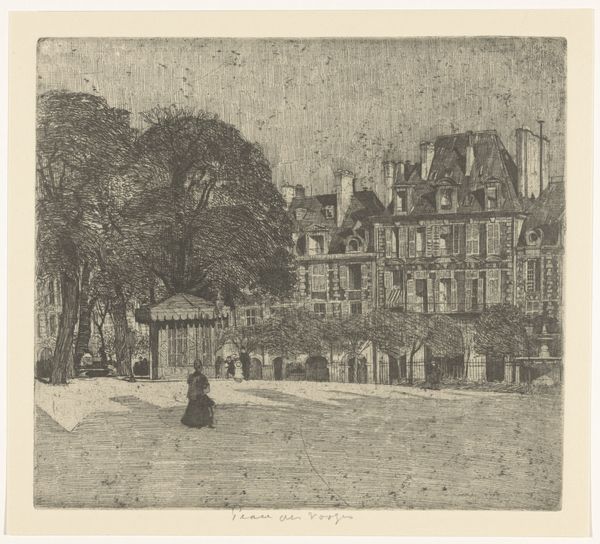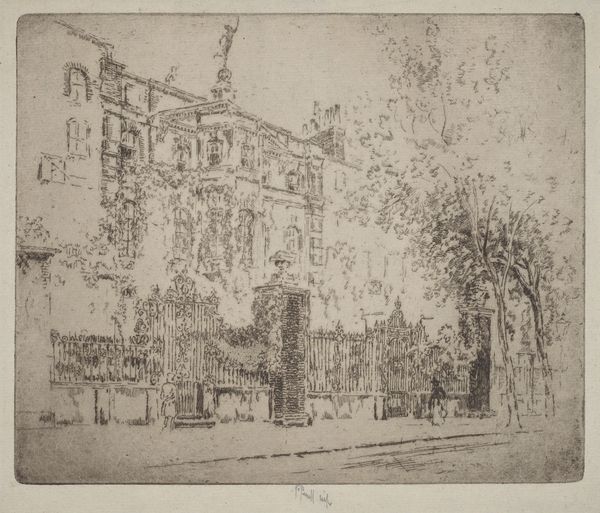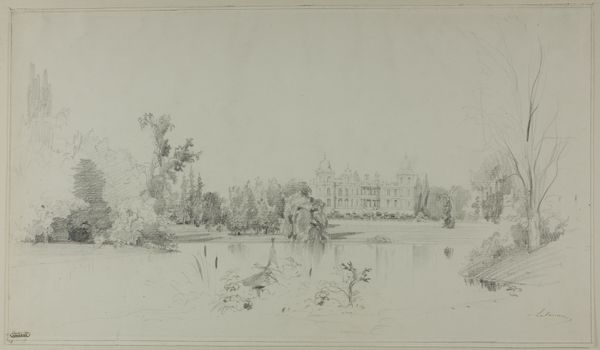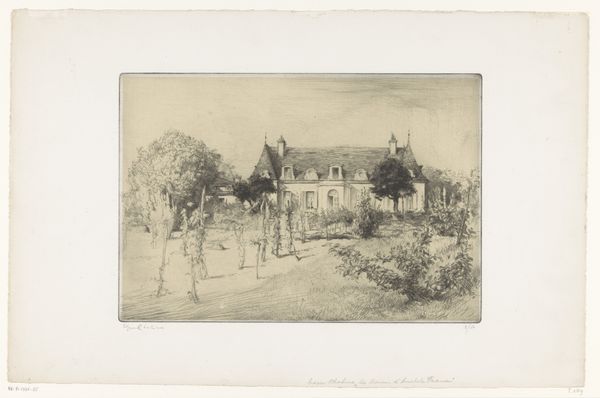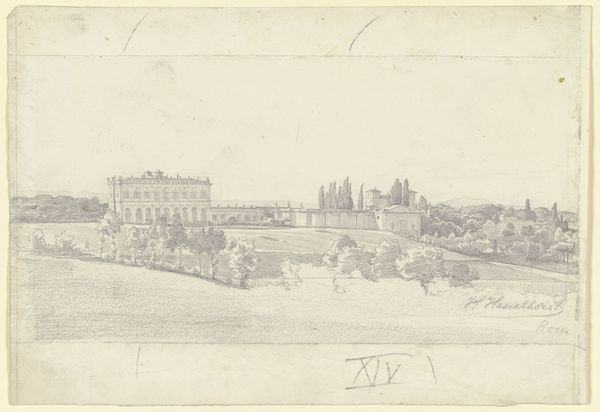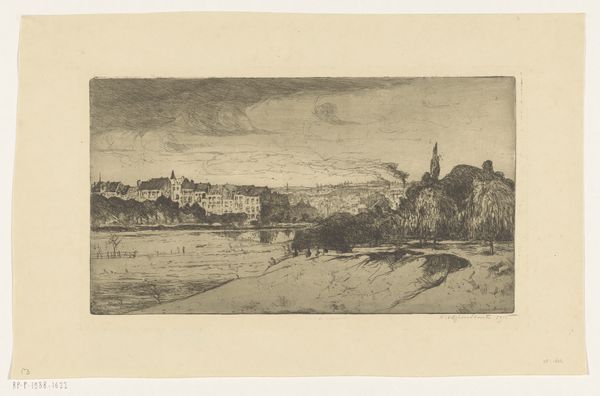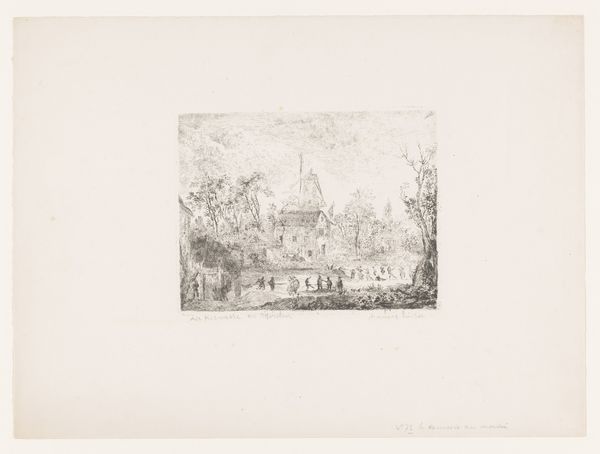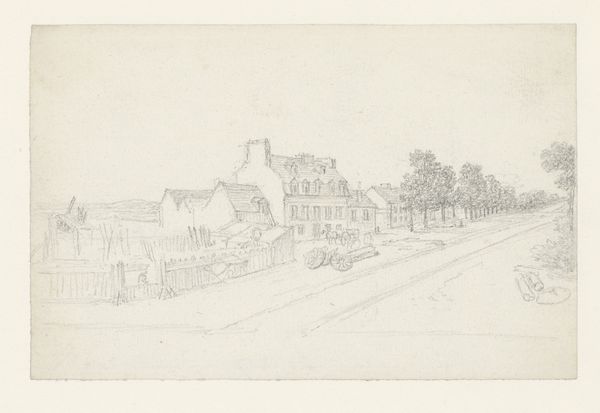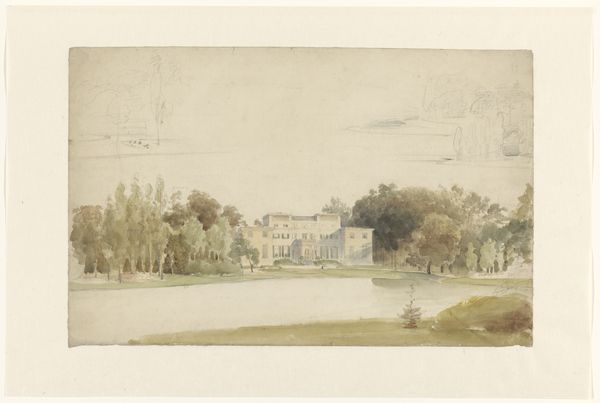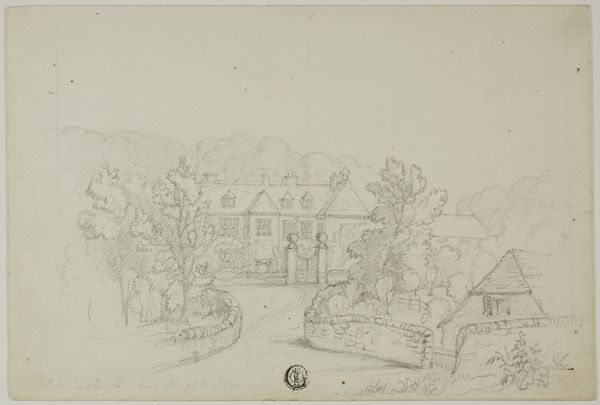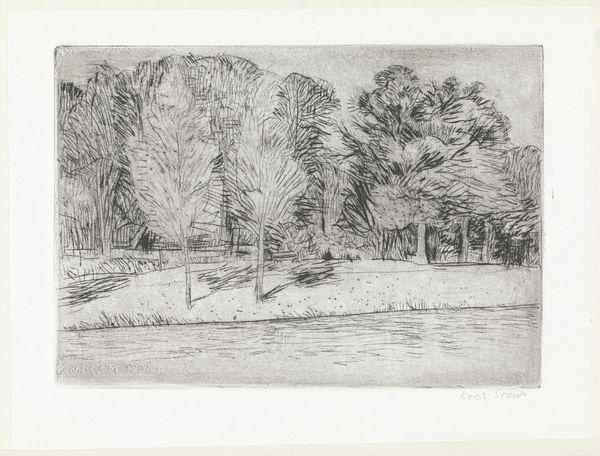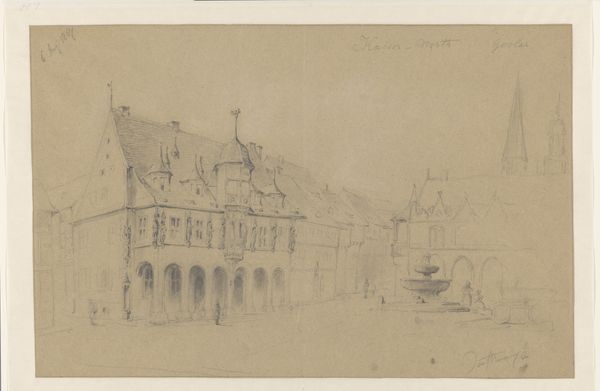
Dimensions: 122 × 212 mm (image); 159 × 240 mm (plate); 200 × 321 mm (sheet)
Copyright: Public Domain
Curator: Welcome. Today, we're examining "Little Pond at the Tuileries," an etching by Gustave Leheutre, created around 1901. It resides here at The Art Institute of Chicago. Editor: Immediately striking is its ghostly, ethereal quality. The tonal range is limited but evocative. The lines create a hazy almost dreamlike atmosphere in what is otherwise a public, urban space. Curator: Indeed. The artist’s mastery of line and texture transforms the urban landscape into a study of light and atmosphere. Look how he uses closely clustered lines to create depth in the trees, as well as build dimension. It’s a masterful example of Impressionistic printmaking. Editor: It prompts me to think about class and leisure. Notice the figures: mothers with children, people strolling—they appear to belong to a privileged class with the time to spend in public gardens. The Tuileries, even today, acts as a stage for displaying social status. Curator: I agree, and how interesting to also think of the spatial politics at play within this cityscape. I also find Leheutre's layering of lines creates visual density in the central space—look to the pond and how it frames the characters interacting. Editor: Yes! But to me it's more than spatial: the blurred faces further strip any specific identities from these bourgeois subjects—we are invited to see this print as the display of urban leisure, but for whom, at what price? Who is visible, and who isn't? Curator: Those absences also suggest a longing to belong, perhaps, which aligns well with the modernist themes present here. Its composition directs our attention inward, focusing our minds on social barriers, and allowing the architecture to become symbolic of greater structures. Editor: And its modernist style is what makes this a timeless piece. Leheutre does a tremendous job highlighting both the tranquility of nature as well as societal conventions with its layered imagery of architectural structures. The cityscape is almost dream-like because it is rooted in unequal and almost unchangeable social power structures. Curator: Precisely. Leheutre encapsulates a transient moment with such permanence through printmaking; I notice this tension the longer I sit with it. Editor: It really underscores how even seemingly innocuous scenes like a stroll in the park can be ripe with layered meanings.
Comments
No comments
Be the first to comment and join the conversation on the ultimate creative platform.

